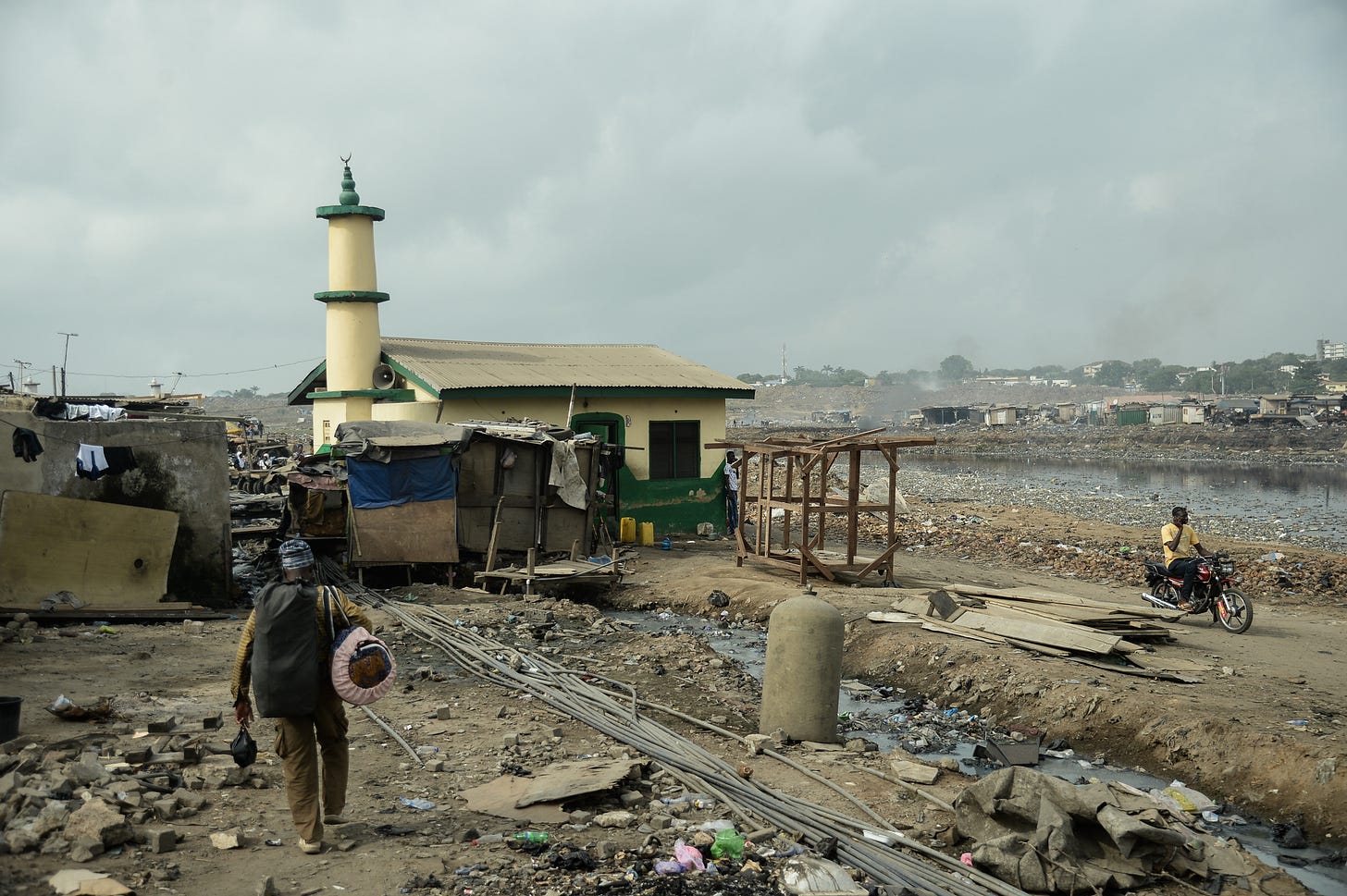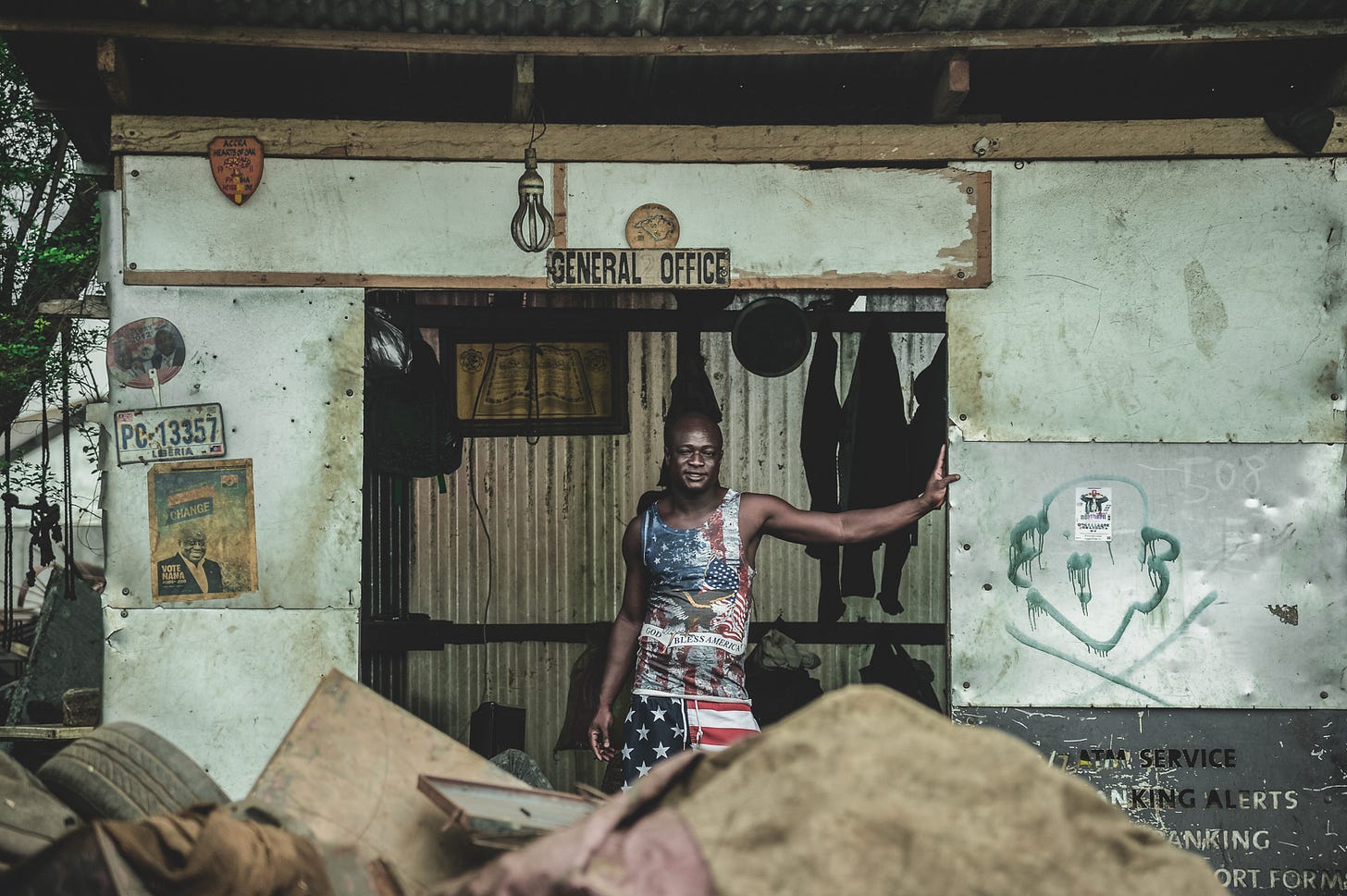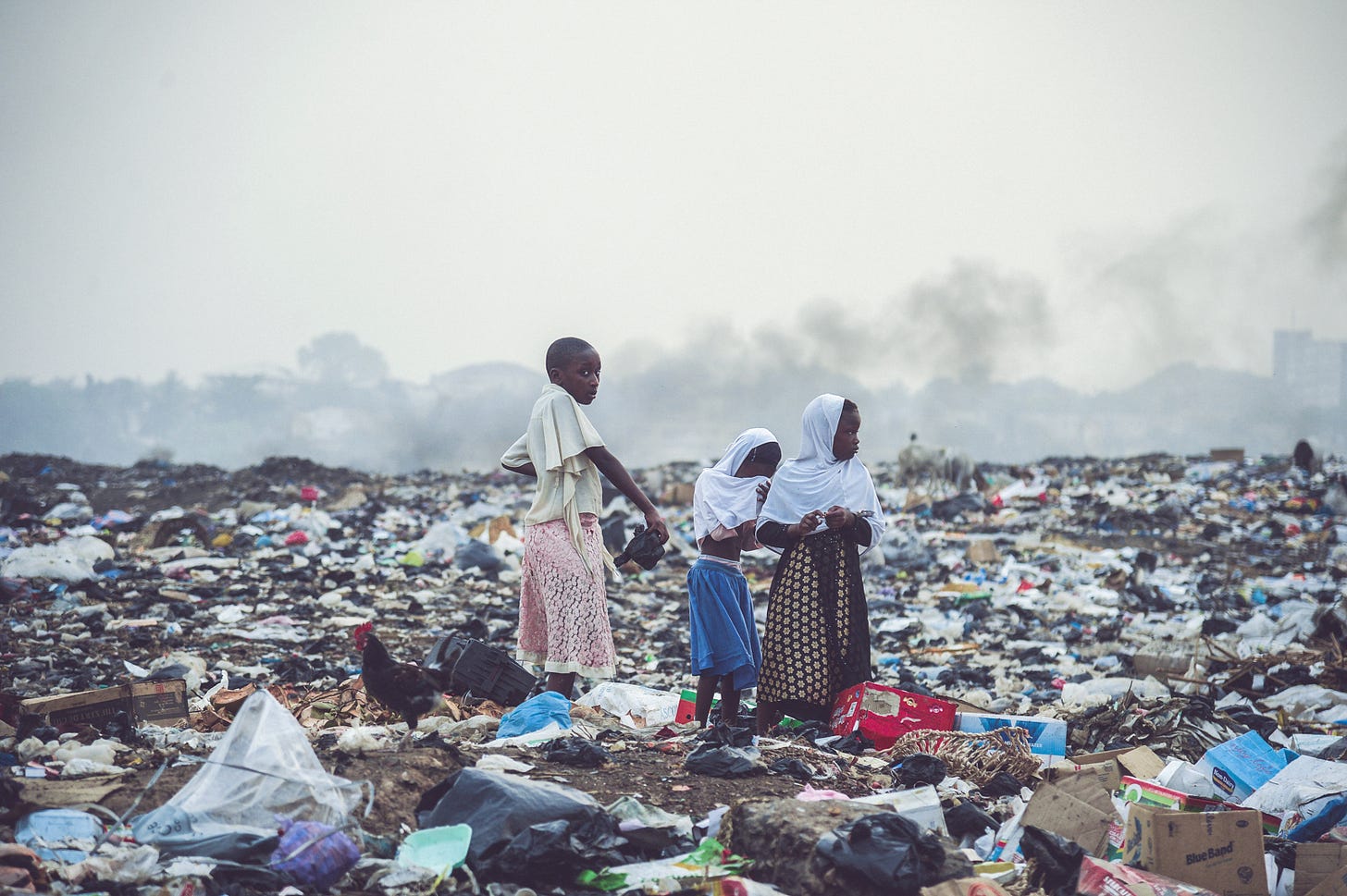Images by Denis Vejas | Website | Instagram
Agbogbloshie is a scrapyard in the center of the Ghanaian capital, Accra. It sits among markets selling everything from yams to electronics, near light industry working on behalf of major corporations and across the river from a large slum known as Old Fadama. Over the past decade Agbogbloshie and Old Fadama have been paired up, inaccurately declared “The largest e-waste dump in the world” and even likened to the troubled biblical cities of Sodom and Gomorrah; yet these are characterisations that are overly-simplistic and to a some extent incorrect.
Tens of thousands of people have made Old Fadama their home. The conditions are, as in any slum, poor, made worse by the existence of the Agbogbloshie scrapyard that sits across the polluted river Odaw. It’s here that a rudimentary recycling machine made up of men and boys manhandle everything from scrap metal to circuit boards, polluting the environment as they burn off worthless plastics in search of saleable elements.

Yet, as is the same in other comparable communities, informal infrastructure exists; a mosque sits alone by the river, shops and homes, little more than shacks, offer shelter and sustenance to the men, women and children that remain rooted here.


Agbogbloshie is more a traditional scrapyard than global centre for e-waste and it is itself a machine, setup to aid the well-worn process of upcycling and repairing used goods. With an influx of used products coming from developed countries to the region beginning in the 1990s and more recently an increase in the domestic supply of scrap, Agbogbloshie has served as one of many sites that receive everything from computers to cars, breaking them down in whatever manner possible and separating the useful from the useless. Men and boys sift through the scrap in search of usable or saleable objects and parts, burning worthless elements like tires and the plastic coatings on wires and saving the more useful materials (like copper, aluminum and glass) and repairable electronics.


Once these valuable parts have been isolated, they are traded to the next group who upcycle the scrap into new products or use the spare parts to repair damaged items which are then re-sold. This system constitutes a key part in a booming informal economy, extending the useful life of products like computers and TVs far beyond the expectations of their original owners and removing barriers to access for consumers who may not otherwise be able to afford electronics.


While this process of upcycling and reusing products continues, it is impossible to ignore the objectively poor conditions that it contributes to in and around Agbogbloshie. The air hangs heavy with poisonous smoke from burning waste, often leading to severe chronic disease and health complications for individuals working in the scrapyard or living in Old Fadama, while the soil and nearby water is polluted by the heavy metals and chemicals that run off the scrap, doing no good for the animals that graze in the area, let alone the people that live there.
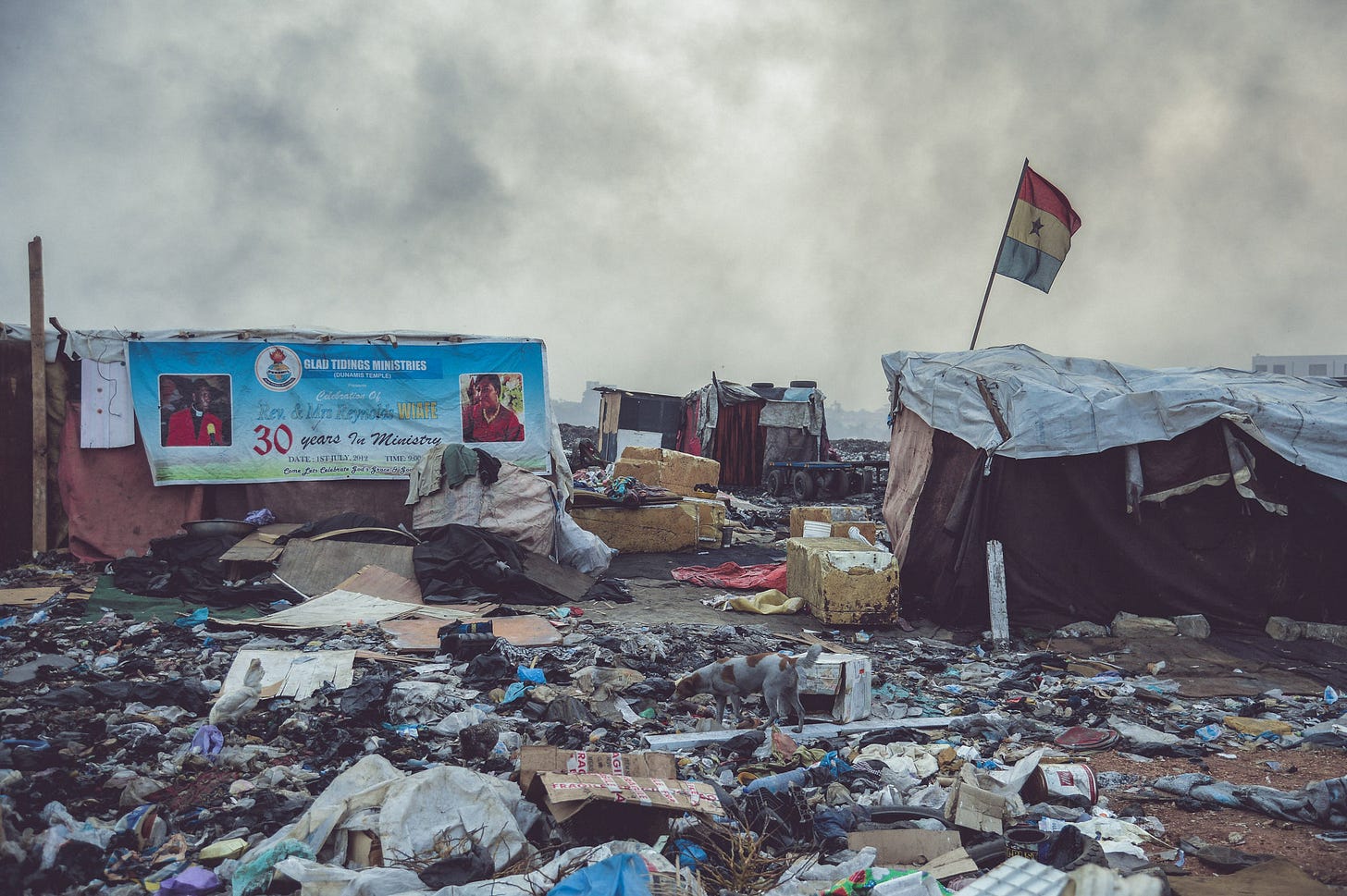
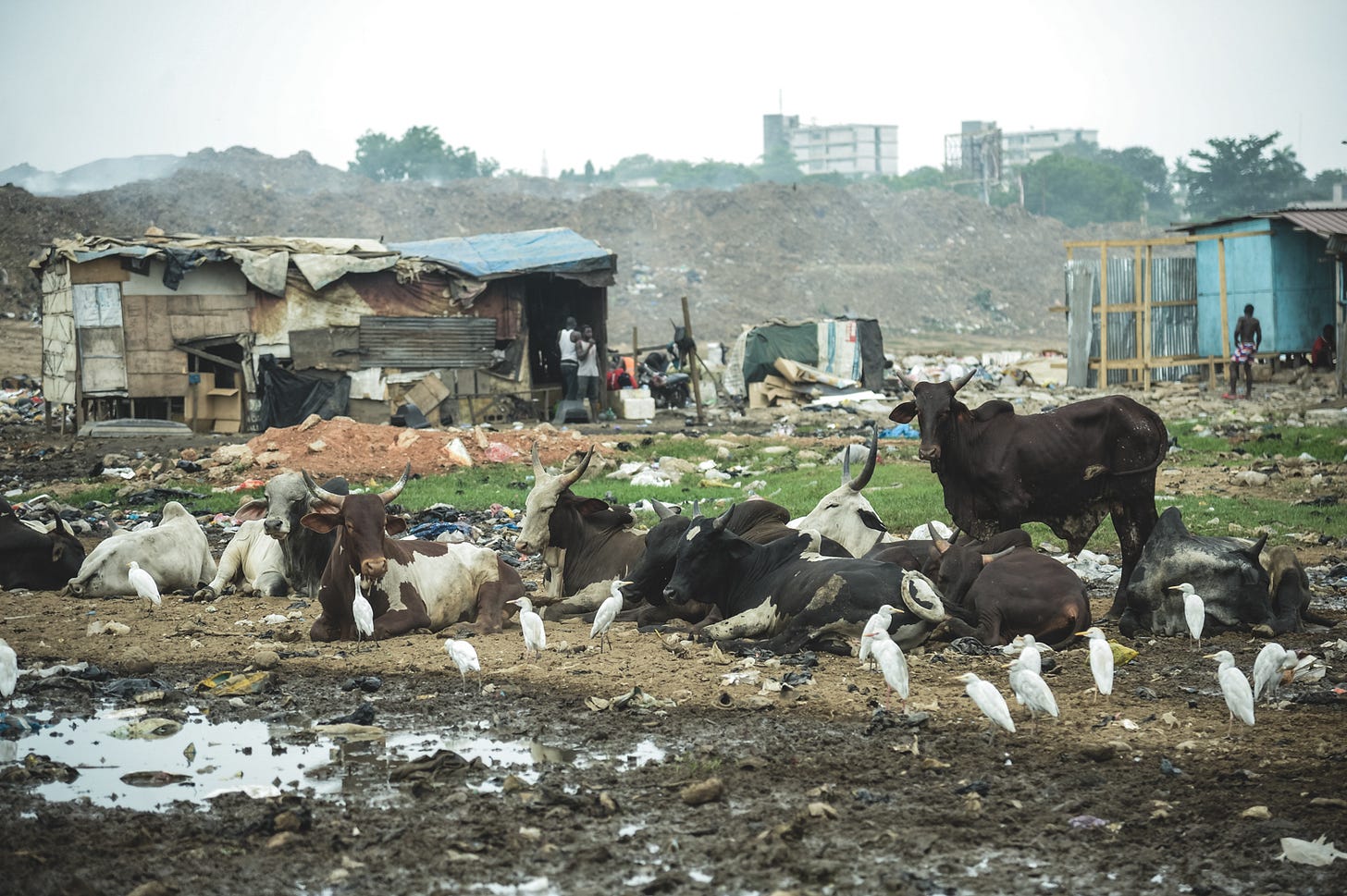
The contrast between the negative byproducts of Agbogbloshie, the pollution, living and working conditions in the area, and the reality of the work that is done there, with people earning a living by making good use of the resources that are available to them, often seems to be missing in profiles of the area. Like most places, Agbogbloshie is better understood with more context providing greater clarity on its contradictions and imperfections. Life there exists surrounded by challenges, but to define it by those challenges alone is to search for simplicity in a world of complexity.



